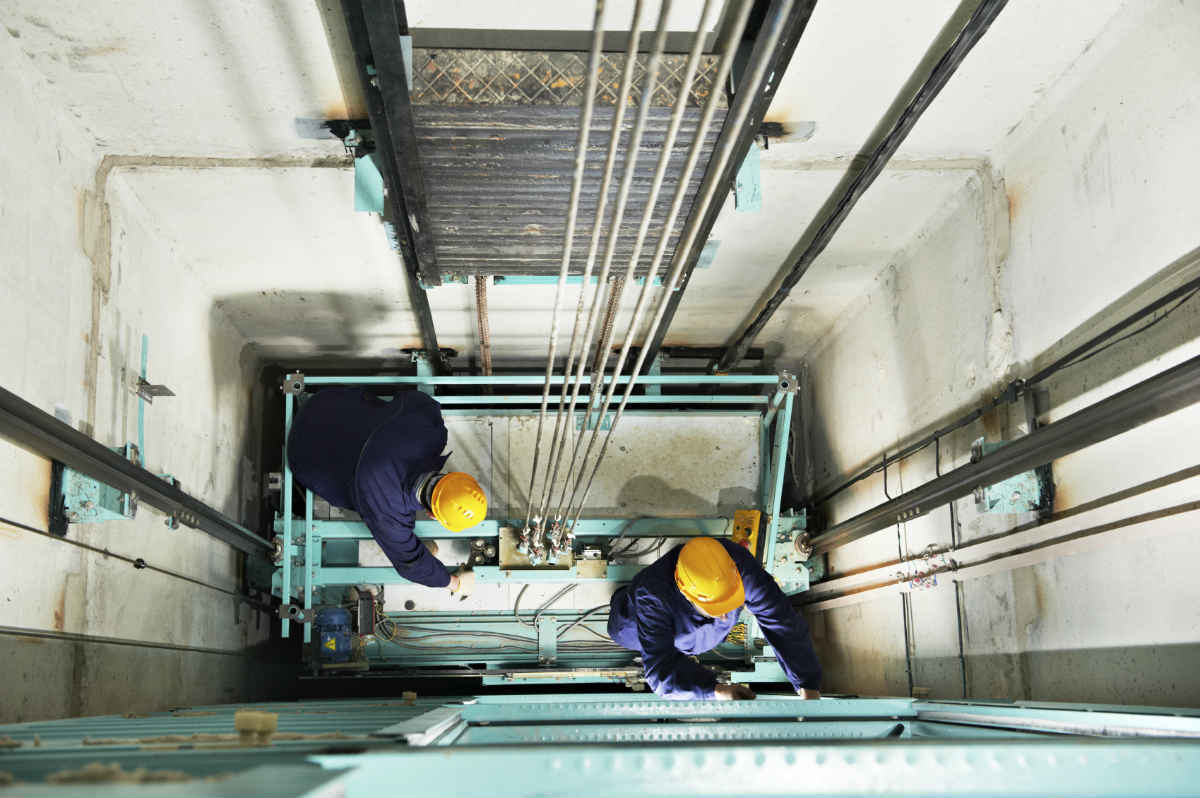A risk that construction workers face is that of an elevator accident.

Construction sites are among the most dangerous places to work, because of the presence of heavy equipment, moving machines, falling debris, and people working on heights. One of the risks that construction workers face is that of an elevator accident. There are various ways in which construction workers can get injured or even killed in an elevator accident.
The Risks of Working Around Elevators
Working in or around elevators can increase the risk of injury or death, especially when working near elevator shafts or on elevated surfaces. Elevators are required for completing certain types of construction work and construction workers who are required to work on or around these elevators are in danger. Injuries sustained from elevator falls are often severe and in many cases they can be catastrophic. Injuries workers can sustain in elevator accidents include:
- broken bones
- neck injuries
- brain injuries
- back injuries
- nerve damage
- spinal cord injuries
Elevator Accident Statistics
According to the statistics provided by The Census of Fatal and Occupational Injuries, around 20 people get killed in elevator or escalator accidents each year in the U.S. These fatalities include construction contractors performing installations or maintenance of these elevators.
Elevator shafts are large holes in the ground, which present a serious threat to construction workers who are at risk of falling in. An elevator shaft that is left unattended and without a proper blockade poses a serious fall hazard, especially when workers are preoccupied by another task they are performing close to the opening. When shafts are not occupied, they should be properly blocked off and marked to prevent fall accidents.
Types of Elevator Accidents
- asphyxiation from being trapped in the elevator
- struck by the elevator or counterweight
- electric shock or electrocution
- uncontrolled fall of the elevator car
- falling into the elevator shaft
- caught in the doors or other moving parts
In the absence of proper safety equipment, any worker who is working in or around an elevator shaft is at a high risk of suffering an injury. It the duty of the employer to provide protective gear such as reinforced footwear, gloves, and hard hats to workers. Workers should also have a personal fall arrest system to prevent falls when working in close proximity to elevator shafts.
Workers’ Compensation Benefits
If you have sustained injuries in an elevator accident at your workplace, you may be entitled to workers’ compensation benefits. If you fail to get the benefits you deserve, consult a St. Louis workplace accident lawyer. Call The Law Office of James M. Hoffmann at (314) 361-4300 for a free consultation.
Workplace Injury and Accident Causes
Asbestos Exposure
Asbestos Removal
Second Hand Asbestos Exposure
Sexual Assault Workplace
Physical Assault at Workplace
Workplace Injuries Assembly Line
At Fault Accident
Workplace Attack
Benzene Exposure
Injured on Lunch Break
Building Collapse
Workplace Bullying
Chemical Exposure in the Workplace
Chemical Hazards in the Workplace
Cold Stress in the Workplace
Combustible Dust Explosion
Computer Use
Construction Site Accident
Conveyor Belt Accident
On the Job Injury Cause by Coworker
Crane Accident
Injuries from Desk Jobs
Diesel Exhaust Fumes Exposure
Digging Injury
Breaking Company Policy
Drowning at Work
Workplace Drug Use
Electrical Workplace Accidents
Elevator Accident
Equipment Accident
Ergonomics in the Workplace
Excessive Overtime
Workplace Explosion
Extreme Danger
Fall at Work
Fire in the Workplace
Slicer Accident
Forklift Accident
Walk in Freezer
Gas Pipeline Accident
Hard Work
Workplace Hazardous Substances
Hazardous Equipment in the Workplace
Heavy Machinery Accident
Horseplay in the Workplace
Danger at Workplace
Insomnia in the Workplace
Jumping Accident
Ladder Falls at Work
Loading Dock Accident
Machinery Accident Workplace
Equipment Failure Accident
Mining Accident
Mold in the Workplace
Nail Gun Accident
Workplace Noise
Non Collision Accident
Heavy Objects
Workplace Office Equipment
Opioid Use
Injury at Work Due to OSHA Violation
Overexertion Injuries at Work
Use of Pain Killers
Power Tool Injury
Inadequate PPE
Repetitive Motion Injuries in the Workplace
Mansfield Bar
Scaffolding Accident
Secondhand Smoke in the Workplace
Side Effects
Silica Exposure
Sleep Disorder
Slip and Fall Injuries in the Workplace
Stairs at Work
Struck by a Vehicle
Tar Fumes
Toxic Chemical Exposure
Toxic Fumes in the Workplace
Car Accident While Working
Trench Collapse
Trips at Work
Unsafe Working Conditions
Workplace Violence
Welding Injury
Winter Hazards in the Workplace
Working Shifts
